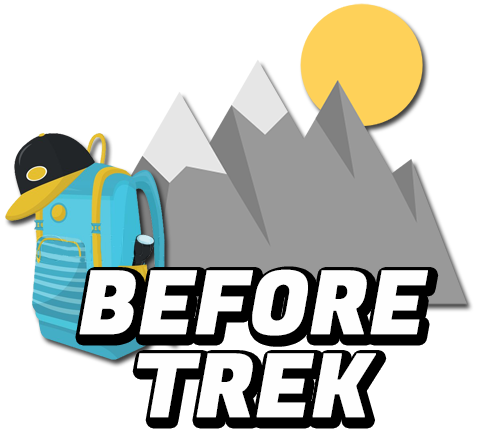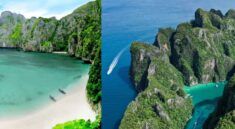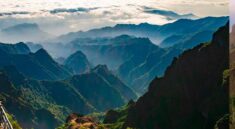Salto del Agrio is a waterfall located in the Caviahue-Copahue National Park in the Neuquén Province of Argentina. It is a 62-meter (203-foot) cascade that flows over a lava flow from the Copahue Volcano. The Agrio River, which feeds the waterfall, contains sulfuric acid, which gives it a distinctive yellow-green color.
The waterfall is located about 18 kilometers (11 miles) from the town of Caviahue. It is a popular tourist destination, and there are several hiking trails that lead to the base of the waterfall. The best time to visit is during the spring or fall, when the weather is mild and the waterfall is flowing at its fullest.
Salto del Agrio is a beautiful and unique natural wonder. It is a must-see for anyone visiting the Caviahue-Copahue National Park.
How to get there
Here’s a general guide on how to get there:
- Fly to Neuquén:
- The nearest major airport is Presidente Perón International Airport (Aeropuerto Internacional Presidente Perón) in Neuquén city.
- You can find flights to Neuquén from major cities in Argentina.
- Travel to Caviahue:
- From Neuquén city, you would likely need to take a bus or drive to Caviahue, a town near the Salto del Agrio.
- Caviahue is approximately 380 kilometers from Neuquén city, and the journey may take several hours.
- Local Transportation to Salto del Agrio:
- Once you reach Caviahue, you may need to arrange local transportation to Salto del Agrio.
- It’s advisable to check with local tour operators, taxis, or other transportation services for the most convenient way to reach the waterfall.
- Guided Tours:
- Consider joining a guided tour that includes Salto del Agrio as part of the itinerary. Tour operators in the region may offer organized trips to the waterfall.
- Road Conditions:
- Be aware of the road conditions, especially if you plan to drive. Weather and road conditions in mountainous regions can vary, so it’s important to check in advance.
Things to do
The region around Salto del Agrio in the Neuquén Province of Argentina offers a variety of activities for visitors to enjoy. Here are some things you might consider doing in and around the area:
- Visit Salto del Agrio:
- Explore the natural beauty of Salto del Agrio, the waterfall itself. Take in the breathtaking scenery and enjoy the sound of cascading water.
- Hiking and Nature Walks:
- Take advantage of the surrounding Andes Mountains with hiking trails or nature walks. The area likely offers scenic routes and viewpoints.
- Explore Caviahue:
- Spend time exploring the nearby town of Caviahue. Discover local culture, visit markets, and enjoy the hospitality of the residents.
- Adventure Activities:
- If you’re an adventure enthusiast, check for opportunities for activities like rock climbing, horseback riding, or mountain biking.
- Photography:
- Capture the stunning landscapes and natural beauty of the region through photography. The Andes Mountains and the waterfall provide excellent photo opportunities.
- Relaxation:
- Enjoy the tranquility of the surroundings. Find a peaceful spot to relax, read a book, or simply take in the serenity of nature.
- Hot Springs:
- Check if there are any natural hot springs in the vicinity. Relaxing in hot springs can be a soothing experience, especially if there are any nearby.
- Local Cuisine:
- Explore local restaurants and try traditional Argentine cuisine. Neuquén Province is known for its delicious regional dishes, so indulge in local flavors.
- Wildlife Watching:
- If the area is rich in biodiversity, consider wildlife watching. This could include birdwatching or looking for other local fauna.
- Cultural Activities:
- Learn about the local culture and traditions. Check for any cultural events, festivals, or exhibitions happening during your visit.
- Skiing (seasonal):
- Depending on the time of year, you might find skiing opportunities in the region, particularly if you visit during the winter months.
Things not to forget
When visiting Salto del Agrio and its surrounding region in the Neuquén Province, it’s important to be well-prepared. Here are some things not to forget:
- Weather-Appropriate Clothing:
- The weather in mountainous regions can be unpredictable. Bring layers, a waterproof jacket, and comfortable shoes suitable for walking or hiking.
- Sun Protection:
- Don’t forget sunscreen, sunglasses, and a hat to protect yourself from the sun, especially if you plan on spending time outdoors.
- Water and Snacks:
- Carry an adequate supply of water and some snacks, especially if you plan on hiking or exploring the area. It’s important to stay hydrated.
- Map and Navigation:
- Have a map of the area, and if you plan on exploring trails or hiking paths, consider a GPS device or a reliable navigation app on your phone.
- Camera and Binoculars:
- Capture the scenic landscapes and any wildlife you might encounter. Binoculars can enhance your wildlife watching experience.
- Cash and Identification:
- Bring some cash, as remote areas may not have widespread card payment facilities. Also, carry identification and any necessary travel documents.
- First Aid Kit:
- A basic first aid kit with items like bandages, pain relievers, and any personal medications is always a good idea.
- Insect Repellent:
- Depending on the season and location, insects can be present. Bring insect repellent to ensure a more comfortable experience.
- Travel Insurance:
- It’s advisable to have travel insurance that covers medical emergencies and other unforeseen events.
- Respect for Nature:
- Practice responsible tourism by respecting the natural environment. Avoid leaving trash behind and follow any guidelines or regulations set by local authorities.
- Local Information:
- Gather information about the area, including emergency contacts, local services, and any restrictions or regulations for specific activities.
- Communication Device:
- Ensure your phone is charged, and consider bringing a portable charger. In remote areas, having a reliable means of communication is essential.
- Language Considerations:
- If Spanish is not your native language, having a basic understanding or a translation app can be helpful, as English may not be widely spoken in some areas.
Always check for any specific recommendations or requirements for the time of year you plan to visit, and be flexible in your plans to accommodate any unexpected changes in weather or conditions.





